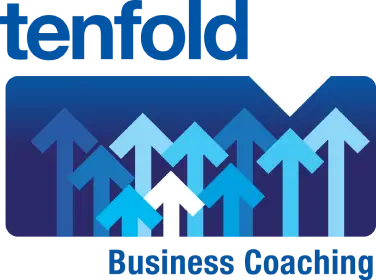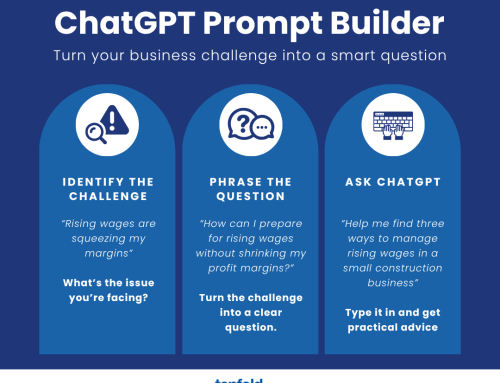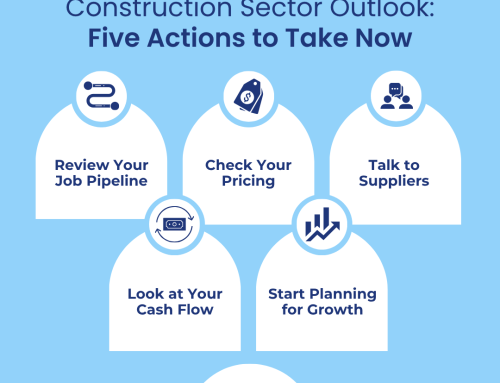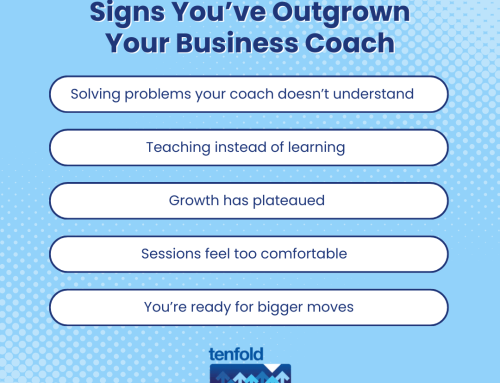Smart Choices, Bigger Profits: How Electrical Contractors Can Use AI to Action the Strategy
If you are an electrical contractor looking to grow your business in the years 2025 to 2026, you have probably already begun thinking strategically about which commercial jobs will provide the best return on your investment. However, having a strategy alone is not sufficient. To turn smart choices into greater profits, you need to translate that high-level advice into everyday actions. That is where artificial intelligence tools come into play. When used effectively, these tools can help you streamline your operations, enhance your decision-making processes, and free up valuable time so you can focus on expanding your business.
I’m Ashley Thomson, a business coach with Tenfold Business Coaching. I’ve spent over 20 years helping established trade-based businesses grow sustainably and profitably. My background in engineering and corporate consulting enables me to bring a first-principles approach to business coaching. I’ve worked with electrical contractors across Australia to help them make informed decisions, improve margins, and build teams that deliver results. If you’re looking for business coaching for electricians, I’m here to help you get results.
Let’s break down how AI can help you action the strategic advice from my previous article, Smart Choices, Bigger Profits: How Electrical Contractors Can Select the Right Commercial Jobs in 2025-26. We’ll examine each key advice area and explore how smart contractors are utilising AI tools to translate strategy into results.
Job Selection and Profitability Forecasting
One of the most significant decisions you will need to make is which jobs to accept. In 2025-26, the most profitable commercial jobs will be those with repeatable scopes, dependable clients, and minimal variation. Artificial intelligence can help you evaluate job profitability before making a commitment.
Tools such as ChatGPT, Google Sheets equipped with AI plugins, and Microsoft Copilot can analyse historical job data to identify patterns. You can input previous project costs, timelines, and profit margins, then ask the AI to highlight which types of jobs consistently deliver the best returns. You can also utilise AI to run different scenarios, such as what happens if labour costs increase by ten per cent or if material delays cause project timelines to be extended.
To facilitate this, set up a spreadsheet with columns for the type of job, client, estimated cost, actual cost, profit margin, and timeline. Use AI to summarise the trends and identify any outliers. This approach helps you make more informed decisions about which jobs to quote for and which to decline.
Quoting and Estimating
Quoting can be a very time-consuming process, and making mistakes along the way can end up being costly. Fortunately, there are AI tools such as Buildxact, Groundplan, and Excel with AI formulas that can help speed up the quoting process and also improve accuracy. These platforms leverage historical data and intelligent algorithms to generate quotes based on similar jobs completed in the past, taking into account labour rates, materials costs, and overhead expenses.
Additionally, AI can assist in writing quote emails that sound professional and persuasive. Tools like Copilot in Outlook or Jasper AI can create draft emails that clearly explain your value proposition, outline what is included in the quote, and set clear expectations. Using these tools can help you win more jobs without having to spend hours typing up emails or figuring out the right words.
Scheduling and Resource Allocation
Once you have secured the job, the next significant challenge is organising the schedule. Australian businesses can benefit from using AI-powered tools such as Tradify, SimPRO, and Trello, which incorporate automation features to help allocate resources efficiently. These platforms utilise intelligent scheduling systems to prevent booking conflicts, optimise travel routes for teams, and ensure that everyone is working at full capacity.
For instance, you can establish rules that automatically assign jobs based on factors such as the job location, the skill set required, and team member availability. If a team member calls in sick on the day, the system can automatically suggest suitable replacements and update the schedule in real time. This approach helps reduce downtime and keeps projects progressing smoothly and on schedule.
Team Communication and Site Management
Clear communication is absolutely vital when working on commercial construction projects. Artificial intelligence tools such as Slack with AI bots, Microsoft Teams, and Notion AI can assist you in ensuring everyone is kept informed and on the same page. You can utilise AI to summarise site reports, compile daily task lists, and even translate messages for teams that speak different languages.
If you are overseeing multiple construction sites, AI can help you monitor progress without having to be physically present on-site. Tools like OpenSpace and Buildots employ AI and site cameras to create visual progress reports. These reports allow you to see which tasks have been completed, which ones are delayed, and identify areas where your team might need additional support.
Compliance and Documentation
In the 2025-26 period, compliance will be tighter than ever before. Artificial intelligence (AI) can assist you in staying on top of documentation without becoming overwhelmed by paperwork. Tools such as Formstack, DocuSign integrated with AI, and Google Drive equipped with smart tagging can automate safety checklists, generate Safe Work Method Statements (SWMS) documents, and store all files in a single location.
You can also utilise AI to review contracts and identify clauses that may pose risks. Tools like LegalSifter and Spellbook AI are designed to help contractors interpret legal documents without the need for a lawyer on every job. This will give you greater confidence to sign contracts that safeguard your business.
Marketing and Lead Generation
If you’re looking to grow your business in Australia, you need a consistent flow of quality leads. Artificial intelligence tools like Canva with Magic Write, ChatGPT, and Surfer SEO can assist you in creating marketing content that attracts the right Australian clients. You can use AI to craft blog posts, social media captions, and email campaigns that establish you as a trusted expert in your field.
For example, you might write a post titled “How to Choose the Right Electrical Contractor for Your Commercial Fit-Out” and use AI to optimise it for keywords such as “electrician for commercial fitout” and “electrical contractor Brisbane.” This will help you improve your ranking on Google and increase your visibility among clients who value quality and reliability.
Financial Management and Cash Flow
Ultimately, artificial intelligence can help you manage your finances more proactively. Software applications such as Xero with AI-driven insights, QuickBooks, and Fathom are capable of generating cash flow forecasts, highlighting overdue invoices and recommending strategies to improve profit margins. Additionally, you can utilise artificial intelligence to categorise expenses and identify trends in your spending habits.
If you are working with an electrician business coach, these insights can make your coaching sessions more productive. You can bring in real data to the discussion and make decisions based on facts rather than intuition or guesswork.
An Electrician Business Coach Puts It All Together
AI isn’t a magic wand, but it is a powerful tool when used strategically. The most successful electrical contractors in 2025-26 will be those who combine a clear business strategy with practical AI tools. By automating routine tasks and improving decision-making, you free up time to focus on growth, leadership, and profitability.
As an electrician business coach, I encourage you to start small. Choose one area (quoting, scheduling, or marketing) and test an AI tool that fits your workflow. Once you see the benefits, you’ll be ready to expand and integrate more tools across your business.
Wise choices lead to bigger profits. With AI in your toolkit, you’ll be better equipped to turn strategy into action.






